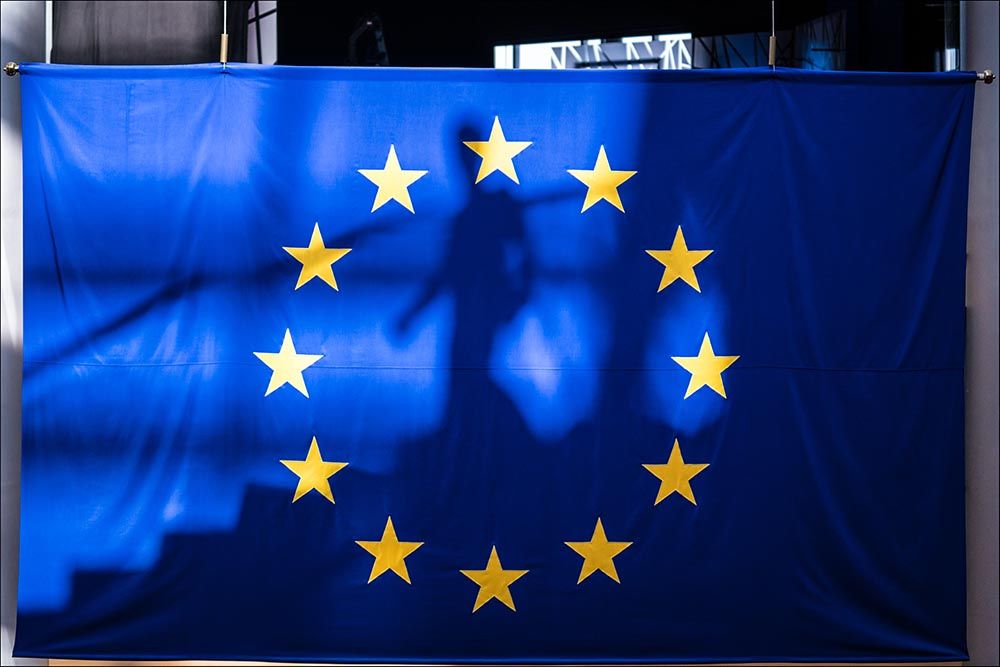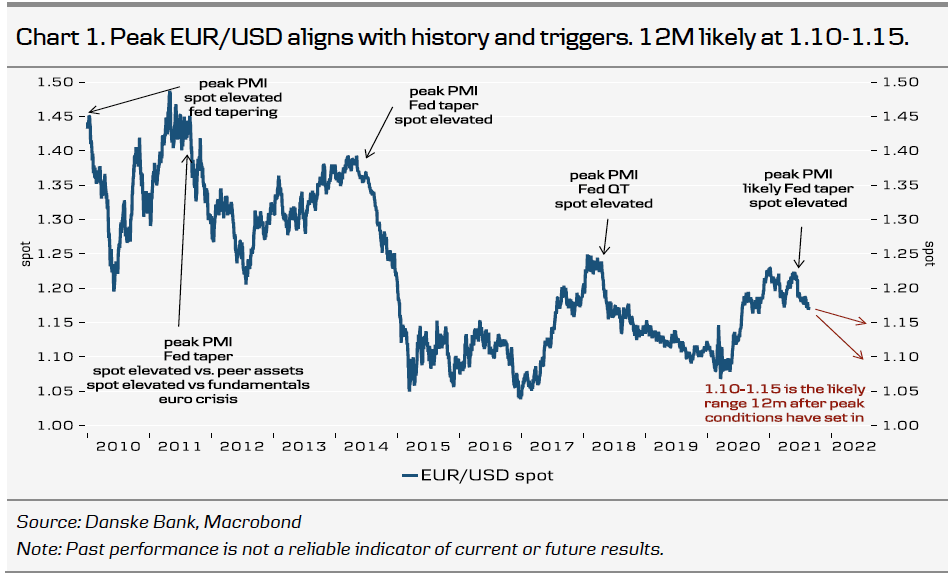Euro-Dollar Rate Forecast to Break Down to July 2020 Levels by Danske Bank
- Written by: Gary Howes

Image © European Union - European Parliament, Reproduced Under CC Licensing.
- EUR/USD reference rates at publication:
- Spot: 1.1740
- Bank transfers (indicative guide): 1.1330-1.1410
- Money transfer specialist rates (indicative): 1.16331.1657
- More information on securing specialist rates, here
- Set up an exchange rate alert, here
The Euro-to-Dollar exchange rate (EUR/USD) decline is being tipped to extend by the foreign exchange analysis team at Nordic based lender and international financial services provider Danske Bank.
Analysts have reassessed their expectations for the Euro's outlook against the Dollar and find that the run lower from the May 1.22 highs is not yet complete.
EUR/USD peaked at 1.2250 on May 25 but has since capitulated and reverted to the 1.17 level.
"It seems natural to ask the question as to how much more we might see over the coming 12 months," says Lars Sparresø Merklin, Senior Analyst, FX Strategy, at Danske Bank.
"In our view, more dollar strength is quite likely over the coming year," he adds.
For Danske Bank the catalyst for further advances by the Dollar are supported by strategic inputs, such as the Eurozone's declining terms of trade advantage.
In addition he notes global credit growth and especially dollar borrowings are quite weak.
"This might be in part attributable to political winds being in favour of regulation but such also support the dollar. Lastly, EUR/USD is looking elevated versus peer assets and valuation models on fundamentals are pro-dollar," he says.
Secure a retail exchange rate that is between 3-5% stronger than offered by leading banks, learn more.
"Over 2021, the tactical picture have turned USD-positive and we still see structural tailwinds," says Merklin.
Danske Bank hold a twelve month forecast target on EUR/USD at 1.15, but they warn the balance of risks are skewed to an even lower level.
"Downside risks are probable to this estimate given that ‘peak conditions’ have increasingly set in now," says Merklin.
The Dollar is one of the top performing major currencies of the past month, driven by a combination of expectations of U.S. economic growth outperformance and bouts of heightened investor nerves owing to the global economic recovery.
The spread of the Delta variant has seen economists rush to lower their economic growth forecasts for China and the South East Asia region, leading to bouts of investor caution that inevitably stoke demand for the Dollar's safe-haven qualities.
This is often referred to as the 'Dollar smile' - a situation in which the Dollar wins whatever the market.
"The USD has re-emerged as a high-yielding safe-haven currency that tends to outperform during bouts of risk aversion thanks to its superior liquidity but also does well during risk on thanks to the relative resilience of the US economy," says Valentin Marinov, Head of G10 FX Strategy at Crédit Agricole.
The pause button has however been pressed on the Dollar's advance this week with markets awaiting the outcome of the Jackson Hole Symposium, due to get underway today.
Of particular interest will be the assessment of Federal Reserve Chair Jerome Powell of the spread of the Delta variant in the U.S. and its contribution to the slowing growth rates in the economy.
Some analysts say rising Covid cases and slowing economic growth rates will allow the Fed to sound some caution over the outlook, which could provide a headwind to the Dollar's recent advance.
Therefore the near-term could see some giveback by the Dollar, but if Danske Bank are correct in their assessment of the outlook this pause will indeed only be temporary.





